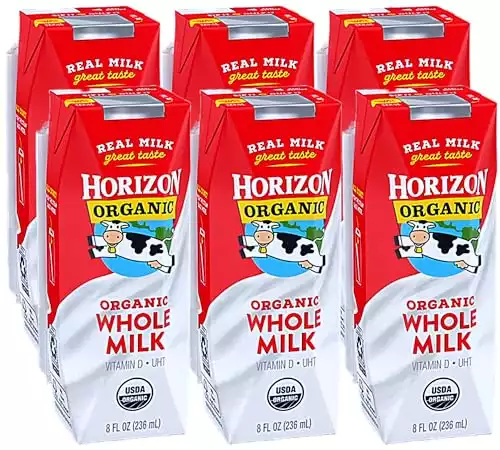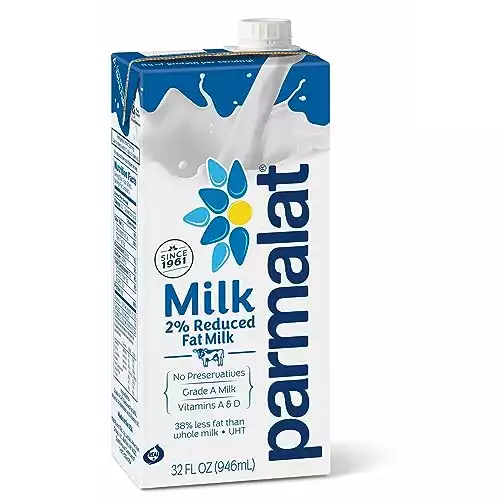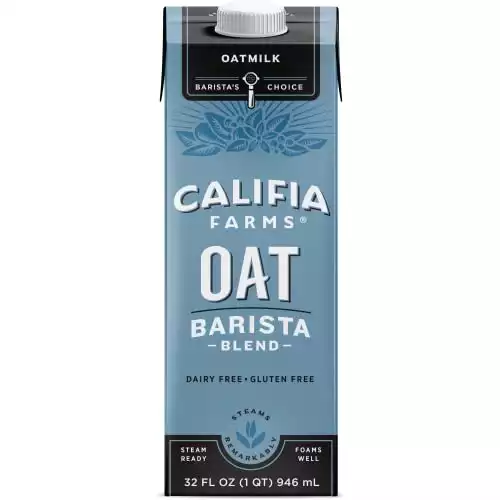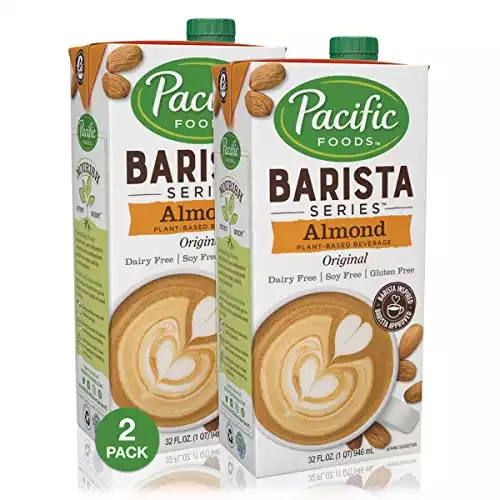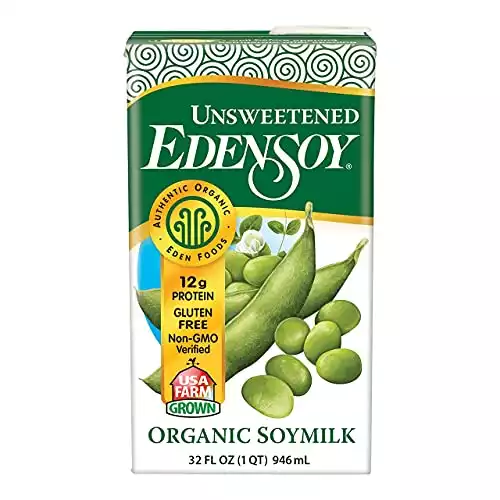Coffee lovers often wonder, what’s the “best milk for latte art?” Cold, whole milk is the clear winner for expresso with milk drinks. Read on to find out why.
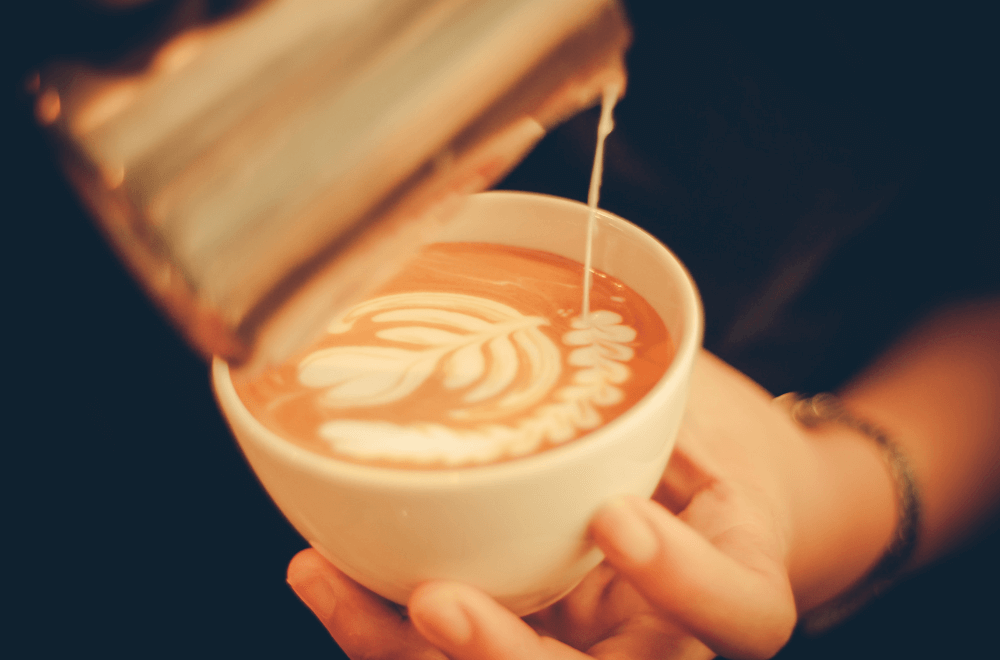
Latte art isn’t just for your coffee shop drinks. Making beautiful espresso drinks takes practice and time. However, you’ll never get your latte art to work perfectly without the right kind of milk.
That soft foam that is necessary for making latte art cannot be achieved with just any type of milk. There are milk options that are better for creating latte art or for making that beautiful fluffy foam on the top of your shot of espresso. Beyond the ability for your milk to create great latte art, you want it to taste good.
In this article, we will examine the different milk options for making beautiful latte art. You might find our guide on how to practice latte art at home useful.
- What To Look For In The Best Milk For Latte Art
- How To Pick The Best Milk For Latte Art
- 1. Horizon Organic Whole Milk
- 2. A2 Milk, Vitamin D Ultra-Pasteurized
- 3. Parmalat, 2% Reduced-Fat Milk
- 4. Califia Farms Oat Milk, Barista Blend
- 5. Pacific Foods, Barista Series Almond Milk
- 6. Unsweetened EdenSoy Organic Soymilk
- Testing Criteria
- Why You Can Trust Me
What To Look For In The Best Milk For Latte Art
Making latte art is about how you steam and pour milk into your cup to create a design. The proper consistency of the milk foam is essential for being able to make latte art and allow it to maintain its shape.
As with your espresso machine, coffee beans, and milk frother, the type and quality of milk do make a difference in the outcome of your latte art designs. It is also helpful to understand why milk foams the way it does when you select milk for latte art.
Milk consists of proteins, water, fat, and lactose. When you heat milk, the structure of the proteins unwinds and becomes tangled with other protein strands. The tangled protein strands create new bonds that are able to trap air bubbles.
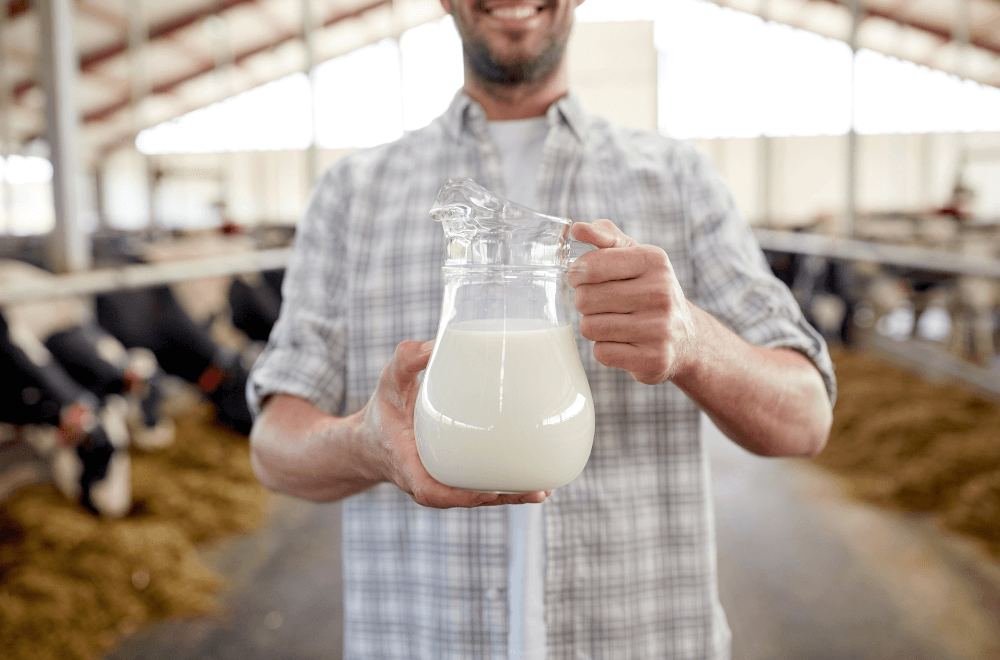
The air trapped in the tangled protein strands is what gives steamed or frothed milk its unique texture. Since protein is the key to holding air in steamed milk, it makes sense that milk with a higher amount of protein will do better at making good quality steamed milk for latte art.
Not all proteins are the same, however, so it is important to select high-quality milk for making latte art. Lower-quality milk contains a higher quantity of casein.
The best milk for latte art is cold milk and comes from cows that are grass-fed, from smaller dairies, and stored in opaque containers. Ideally, if you can get milk directly from the dairy when it is fresh, that is the best milk for making latte art.
How To Pick The Best Milk For Latte Art
Before you run out and buy a jug of milk and start making foam for your latte art, you do need to know what your end result should be. Do you want a nice thick, creamy foam for an espresso drink? Or do you like a light foam that easily makes fun designs on the top of your perfect latte?
Remember, the quality of your foam is related to the amount of protein in your milk, as well as the amount of fat. Milk with a higher fat content will produce foam quicker than milk that has less fat.
When you get down to the best milk for latte art, dairy milk is really the best. The higher protein content in dairy milk makes it ideal for frothing, even if it is low in fat. Low-fat or skim milk just takes a little more time and patience to create a good foam.
Here are some of the best types of milk for creating latte art. Check out our round-up of the best coffee for latte art.
Whole Milk
When you use whole milk, you start with a base that is a good combination of fats and proteins. The higher fat content in whole milk gives your frothed milk a sweet and creamy flavor. Whole milk is great for making thick foam for cappuccinos and macchiatos because the protein and fats hold more air, so it’s perfect for beginners or a home barista.
You do need to make sure that you are using fresh whole milk for latte art. Even at just a few days old, whole milk can contain glycerol, which will cause your foam to be unstable.
2% Or Low-Fat Milk
Also called semi-skimmed milk, 2% or low-fat milk is a nice option if you still want milk that is easy to foam but doesn’t have quite as much fat. Low-fat milk is a great healthy option that is high in protein, so it foams relatively easily. It still has a creamy texture but is a good option for those of us watching what we put into our bodies.
Skim Milk
Many people think that because skim milk has very little fat, it isn’t a good choice for making latte art. However, that is not the case. Skim milk has the same amount of protein as whole or low-fat milk, so it can still make a great foam for latte art.
The foam will not be as creamy since that texture is related to the fat content. The foam from skim milk is a delicate foam and is easier to work with if you are just learning how to make latte art.
Oat Milk
If you are looking for a good dairy-free option for making latte art, oat milk is a good pick. It is very high in protein, so it froths relatively easily, making it ideal for beginners. In fact, the texture of oat milk foam is closest to the foam you get with whole dairy milk.
One thing you will need to keep in mind is that oat milk has a higher water content than dairy milk, so though your foam will start out thick and creamy, it will not last as long as whole milk foam.
Almond Milk
Almond milk is a popular option for people that are looking for a lactose-free alternative to cow’s milk. It has a mild, nutty flavor and a light texture. While almond milk is a tasty alternative to dairy milk, it doesn’t have as much protein or fat as oat or soy milk.
This means that while it will be tasty in your coffee, it doesn’t make a great foam for latte art. Almond milk foam is light and delicate, but as with oat milk, it just doesn’t last as long.
Soy Milk
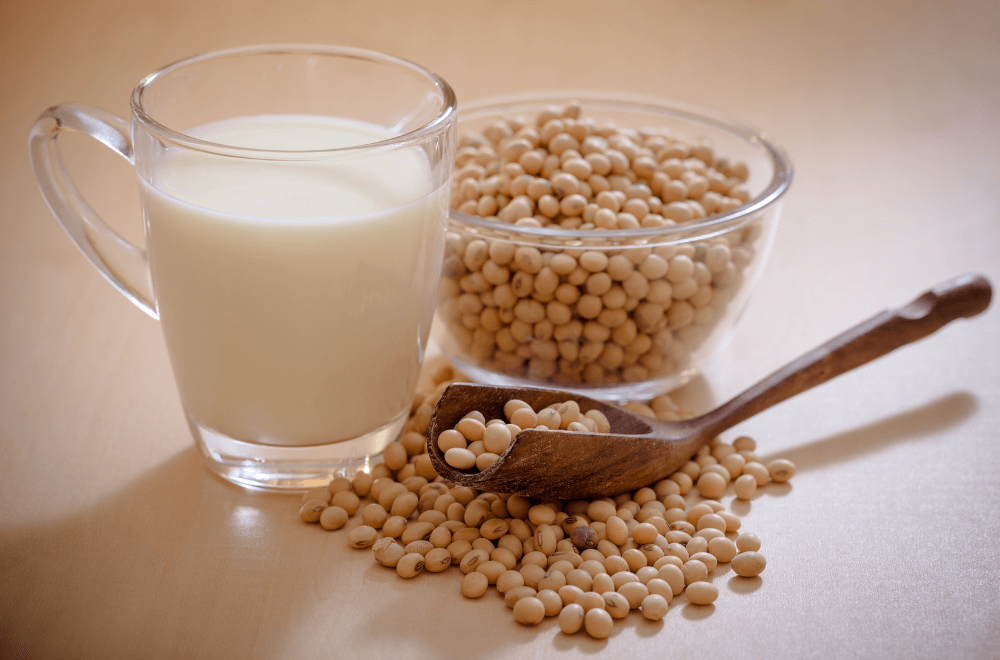
The best dairy-free milk for making latte art is soy milk. Even though it is plant-based milk, it has about the same amount of protein as cow’s milk. The foam you get from soy milk is made from small delicate bubbles, so it also holds up similarly to cow’s milk.
1. Horizon Organic Whole Milk
Horizon’s whole milk is from pasture-raised cows that have not been given growth hormones or antibiotics. Their diet is GMO-free and organic. It is a flavourful cow’s milk, and even before you froth it, it is creamy and rich.
Pasture-raised cows tend to be happier and healthier, and this milk shows how much of a difference this makes in the quality of your cow’s milk. This likely could be the best milk we’ve ever had.
Pros
- High protein and fat content make a creamy and rich foam
- Frothed milk holds its foam well
- Delicious and flavourful making the best latte
- Contains no additives, growth hormones, or antibiotics
Cons
- More expensive than other brands
- This product can be challenging to find
2. A2 Milk, Vitamin D Ultra-Pasteurized
One of the reasons many people avoid dairy is because it makes them feel queasy. A2 Milk comes from cows that naturally make milk with little to no A1 protein.
This alteration in protein content makes A2 a nice option if you don’t want to give up cow’s milk. This whole milk makes great frothed milk and also tastes delicious.
- THE a2 MILK DIFFERENCE
- WE LOVE OUR COWS
- NUTRITIOUS, DELICIOUS DAIRY
- STRIVING FOR SUSTAINABILITY
- COMMITMENT TO QUALITY
Pros
- A great option for those sensitive to dairy
- Regular whole milk makes a very creamy and thick foam
- Not as expensive as other specialty milk
- Farms are Validus-certified for high-quality animal care
Cons
- A2 milk is not organic
- Has a shorter shelf life than other kinds of milk
- Is not actually lactose-free, A1 and A2 are types of casein
3. Parmalat, 2% Reduced-Fat Milk
If you are looking for a good reduced-fat milk for making latte art, our pick is the delicious Parmalat 2% reduced-fat milk. The milk is free from preservatives as it’s Ultra High Temperature (UHT), meaning it’s heated to higher temperatures than pasteurized milk, so it stays fresh for longer. It makes a silky, creamy foam.
Pros
- Long shelf life
- Source of vitamins and protein
Cons
- UHT milk doesn’t always taste the best in lattes
- This is not a lactose-free milk
- Lower fat content means you’ll have to work harder for a good foam
4. Califia Farms Oat Milk, Barista Blend
Barista blend dairy-free milk products have become a popular option for individuals that want to enjoy lattes, cappuccinos, or flat whites at home but don’t want dairy.
Califia Farm’s barista blend oat milk is one of our favorite alternative milks for making latte art. It makes a rich microfoam that stays stable for longer than other oat milks we’ve tried. This oat milk does need to be refrigerated and has a 10-day shelf life after the container has been opened.
Pros
- Non-dairy milk formulated specifically for coffee drinks
- Inexpensive
- Low-fat and unsweetened
- Certified Kosher
- Vegan and gluten-free
Cons
- Comes in a small container
- The protein content is lower than other types of milk
5. Pacific Foods, Barista Series Almond Milk
Pacific Foods barista series almond milk is another nice option if you are looking for dairy-free milk for your morning coffee. This nut milk is made from lightly roasted almonds, so it has a mild nutty flavor.
You will need to work a bit longer at making your foam with this milk. It is lower in fat and protein, so don’t expect a thick, stable foam. But, if you are looking for a good option that tastes delicious and is dairy, gluten, and soy free, this almond milk is a nice choice.
Pros
- Makes a nice light foam for your latte art
- Roasted almonds give this almond milk a nice, nutty flavor
- Reasonably priced nut milk
- Does not contain soy or dairy
Cons
- This almond milk is sweetened
- Lower fat and protein means a less stable foam
6. Unsweetened EdenSoy Organic Soymilk
Grown on farms in the USA, EdenSoy organic soy milk is a nice choice if you want to enjoy dairy-free milk that foams more like cow’s milk. With about the same amount of protein as cow’s milk, this is a good option if you need to avoid lactose.
This milk is a one-to-one substitute for cow’s milk, so it can also be used for cooking and baking. EdenSoy is unsweetened, so you don’t have to worry about changing your morning coffee’s flavor. If you like this article, read our guide to the best latte pitchers.
Pros
- About the same price as a high-quality dairy product
- Unsweetened organic soybean milk
- Similar in protein to dairy
- Lactose and gluten-free
- Certified organic and kosher
Cons
- Not as easy to find as other soy milk products
- Doesn’t foam as well using a steam wand
- Bland flavor
Testing Criteria
We looked at price, versatility, and reviews in order to determine the best milk for latte art. We wanted to accommodate all walks of life; whether you love milk, are vegan, or lactose-intolerant – we all deserve good coffee. There’s no point selecting something inaccessible; most of these kinds of milk are in local grocery stores.
Why You Can Trust Me
We take coffee very seriously here at Full Coffee Roast. As self-proclaimed coffee snobs, we know all there is to know about roasters, grinders, coffee machines, and of course, what products are the best for milk steaming and creating latte art like tulips to flowers and hearts in your brew.
